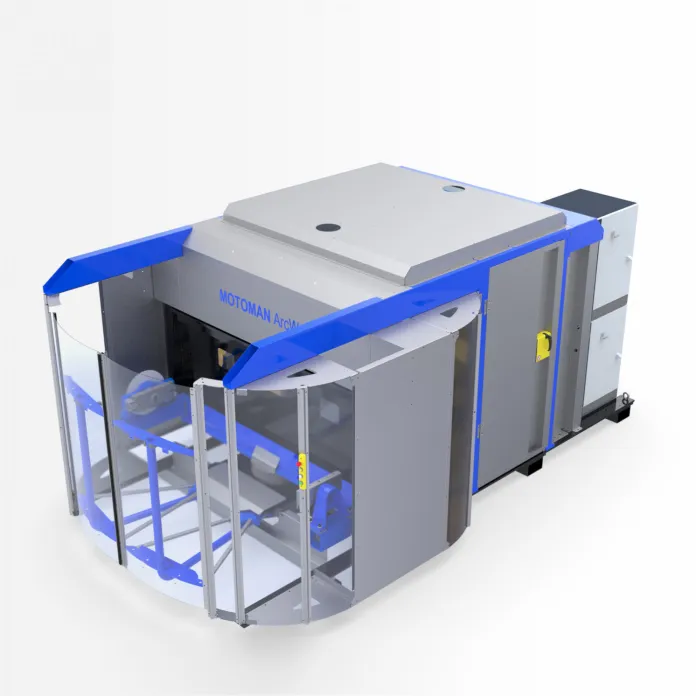With its compactness, flexibility, and cost-effectiveness, the ArcWorld robotic welding system is changing the automotive industry, says Yaskawa Southern Africa’s National Project Manager, Sean Low.
Modern society is the epitome of plug and play. There is a demand for simplicity and instant use of access, as the rapid pace of life doesn’t allow for waiting periods or loading screens. In the world of robotics, the same type of quick-start solutions is necessary, as the ways of working evolve and transform with the Fourth Industrial Revolution.
In the case of AeroKlas Duys – an automotive manufacturing supplier for Ford in Silverton – the company required something unique for its rear bumper step assembly of the Ford Ranger and the VW Amarok. “At first, the company explored the option of custom-built robot cells for its welding requirements,” says Yaskawa Southern Africa’s National Project Manager, Sean Low, “but after seeing the benefits of our ArcWorld system, it decided that the solution matched the criteria and proceeded in ordering three systems.”
The ArcWorld system is the definition of compact and ready to use. As Low explains, the solution is preassembled, preprogrammed through offline 3D CAD models of the jigs, and designed in such a way that it can be easily removed from the container, put on its wheels, and moved to its desired position. As long as there is a flat surface on the factory floor and it is connected to power, the system is ready to be installed and deployed in no time.
While the solution-in-a-box model is appealing due to its straightforward nature, ArcWorld holds another two key benefits. The first is how it is completely integrated and modular, allowing for the systems to work together and with the current assembly line. All that is required is inside and connected within the cabinet, which means there will be no loss of productivity as it easily slots into the assembly line. In addition, there are customisation options available. “The ArcWorld robot systems can be paired with any welding machine brand,” Low says. “We understand most automotive OEMs (original equipment manufacturers) like to retain consistency in brands used, so we will pre-install their desired brand of equipment into our solution.”
Second, the system is easily movable and leaves a smaller footprint. As many factories restructure assembly lines or even move premises, it is crucial to have solutions that can adapt to the ever-changing surroundings and floorspace. In terms of ArcWorld, it is wheelable so it can be moved to a new position without much effort. All that is necessary here is to unplug, raise the built-in jacks of the cabinet, and wheel it away to a new location.
Naturally, a company such as AeroKlas Duys has the strictest health and safety requirements, so the solutions it utilises need to adhere to stringent regulations. Low explains that this isn’t an issue for ArcWorld, namely because Yaskawa is a global brand of the highest standards and “the high-quality cabins are built in Europe to EU standards, so they already come equipped with the required European safety features.”
What is critical, however, is the training for robot operators. As many companies embrace robotic solutions, a need arises to upskill and train their employees on how to maximise the potential of the robots and how to use them safely. For Yaskawa, this has always formed part of its value proposition as it offers training courses to each of its clients, including AeroKlas Duys. There is also the opportunity for companies to enroll their operators in the Southern African Institute of Welding’s ongoing welder course that allows them to receive a certification from the local technical body.
Welding requires a high level of precision and reliability that only a robot can provide. At the same time, businesses and industries need to think of the time and money associated with robotics. With solutions like ArcWorld, though, it pushes everyone closer to the demands of the Fourth Industrial Revolution, while still maintaining simplicity, flexibility, compactness, and (most importantly) cost-effectiveness.












